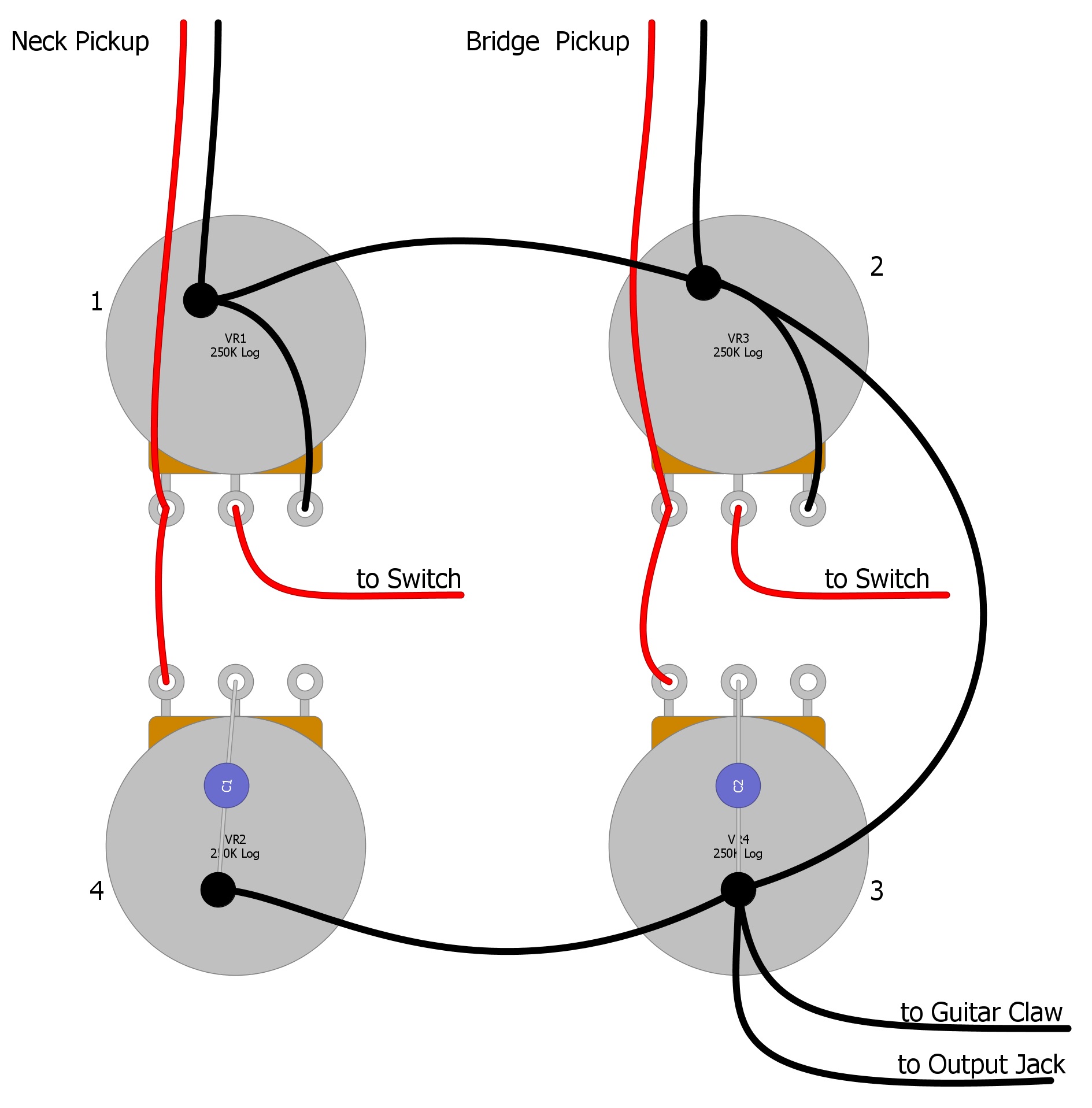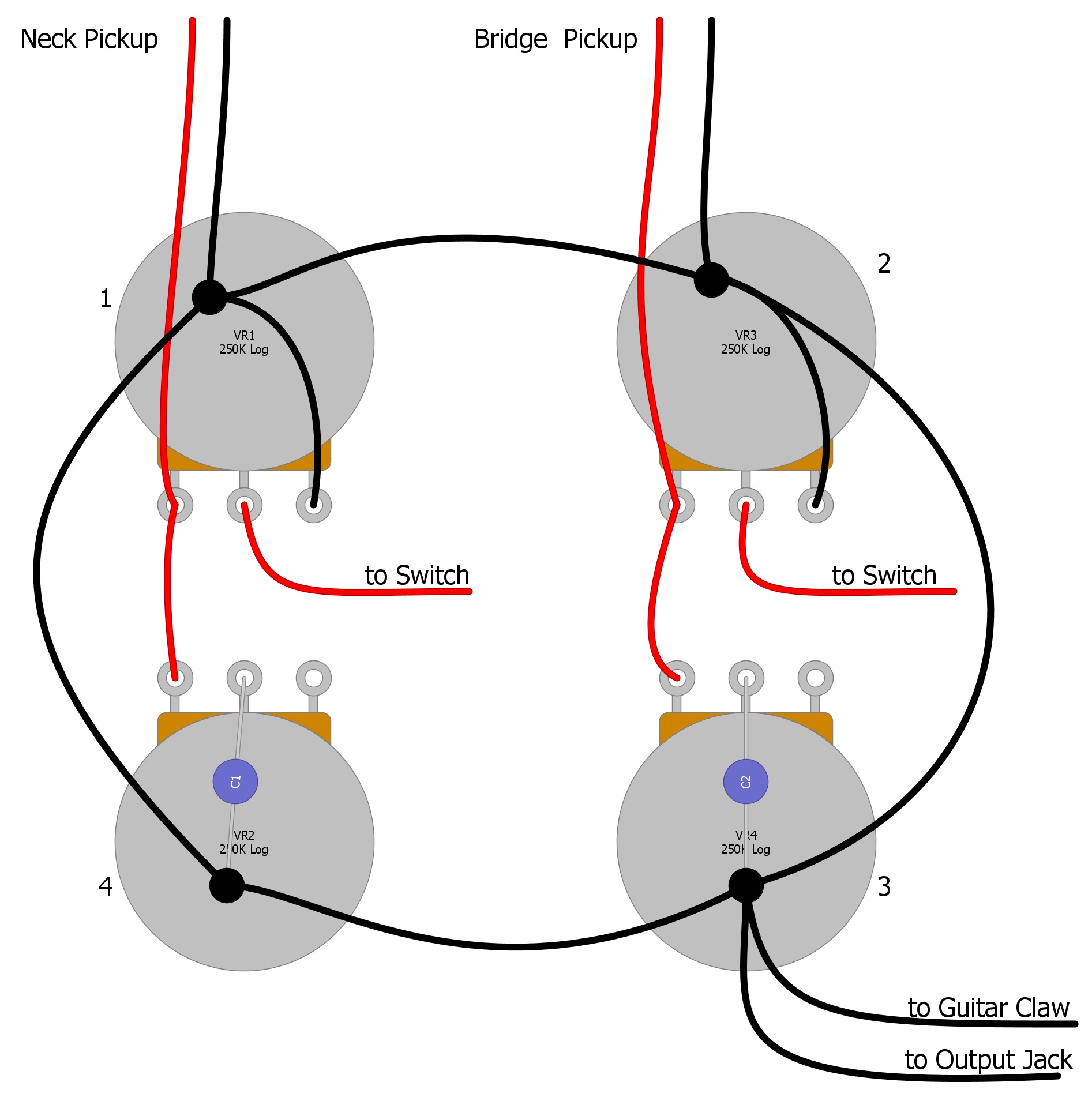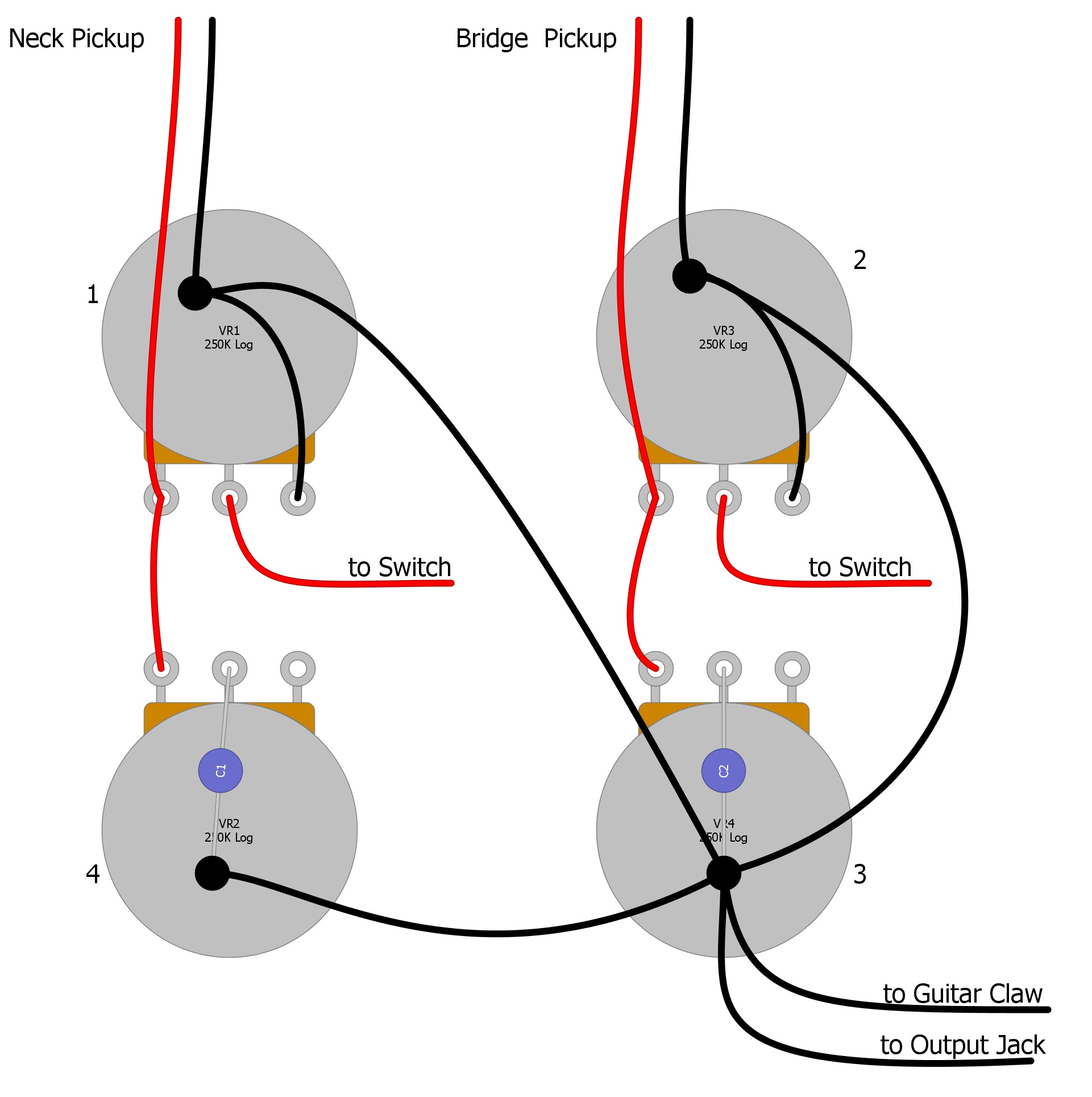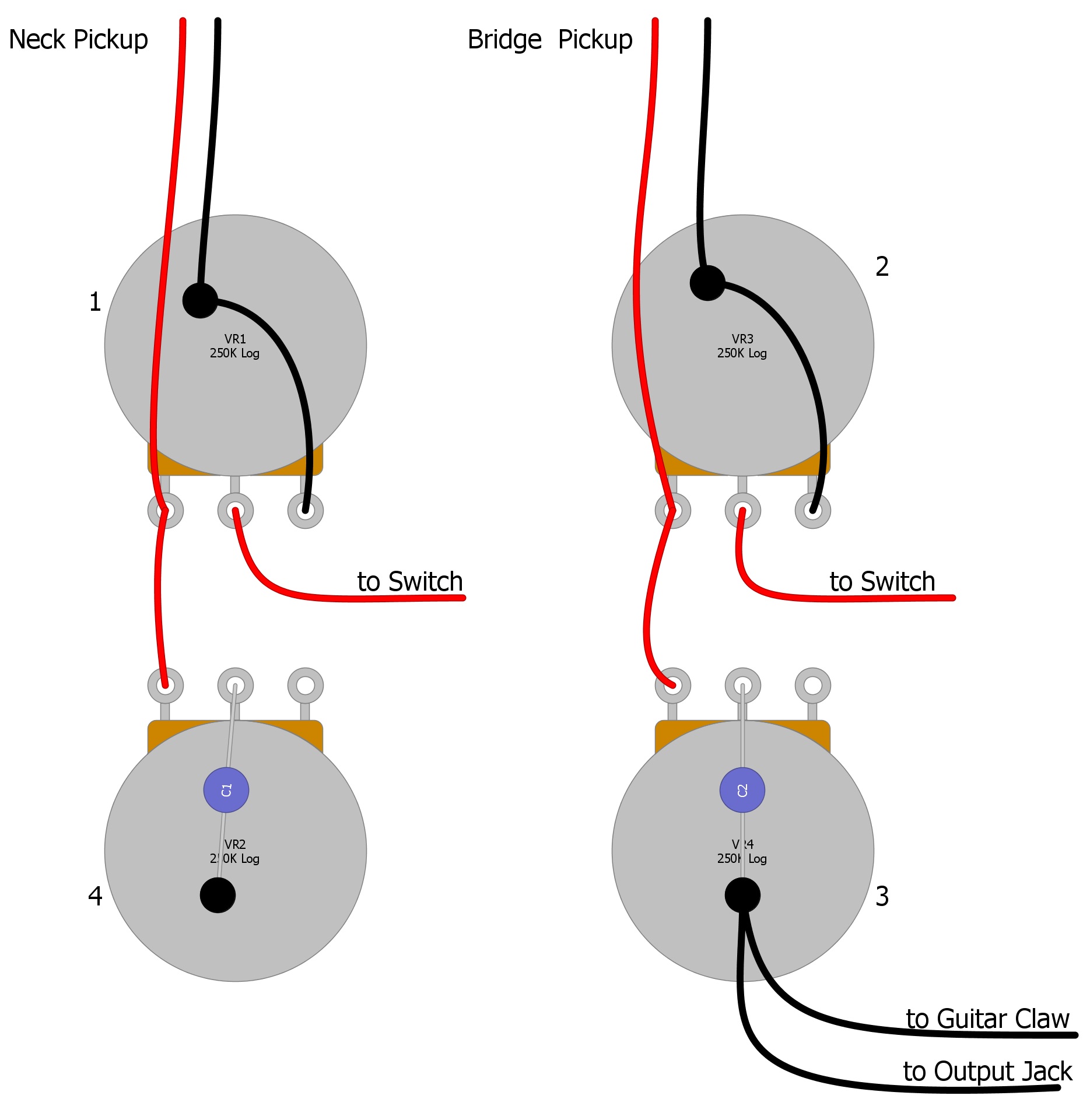
By Ed Malaker
Posted 10/05/2019
In this section, we’ll take a look at proper guitar grounding and how you can make sure your wiring is safe and well-placed. We’ll also take a look at shielding and how you can benefit from correctly shielding your guitar.
In this section, we’ll take a look at proper guitar grounding and how you can make sure your wiring is safe and well-placed. We’ll also take a look at shielding and how you can benefit from correctly shielding your guitar. Poor grounding can cause noise and shocks, while improper shielding will allow radio frequency interference (RF) and electromagnetic interference (EMI) to penetrate your signal. These are a few techniques you can use to provide additional shielding and better ground for your guitar.
Why is Proper Guitar Grounding Important?
The primary reason to make sure your guitar is well-grounded is safety. Incorrect grounding can create a shocking hazard, especially in a humid or wet environment. It can also lead to shocks to your lips and face if you use a microphone with an improperly grounded guitar.
Improper grounding can also create a ground loop, which will allow noise from RF and EMI to enter your signal.
Why is Shielding Important?
Shielding will work to reduce noise caused by RF and EMI. Any electric motor or fluorescent light can create interference, as can light dimmers, microwaves, CB radios, and power transformers. This interference can bleed into your signal through unshielded sections of your guitar wiring and create a static or buzzing sound.
Shielding is an extension of the grounding system, and it connects directly to the ground. As the name suggests, shielding surrounds your electronics to prevent the interference from reaching your signal.
Can Grounding Silence Single-Coil Pickups?
A single-coil guitar pickup is an efficient RF antenna, so it will always pick up noise by design. The only way to remove the noise from a single-coil is to use a second coil to cancel out the sound, as the humbucker pickup does. However, proper grounding can significantly reduce the amount of noise that enters your signal.
Let’s look at some of the different things we can do to ground a guitar.
The Output Jack
One of the most common grounding problems has to do with the output jack. This component is easy to wire backward, and it often happens after replacing a faulty jack. You can tell if your jack’s wires are backward if the guitar makes a loud humming sound when you touch the strings.
If you experience this problem, reverse the wires leading to the jack.
The Ground Loop
The ground loop is another common cause of excessive noise. Similar to how old-fashioned television antennas were made, any wire connected to itself in a circle can pick up electromagnetic fields.
Previously, we discussed how a single-coil pickup is an antenna for the RF and EMI. The reason it acts as an antenna is that a single-coil pickup contains hundreds of these loops of wire.
If one of our components connects to ground more than once, we can accidentally create a ground loop that also acts as an EMI antenna. There are two common ways that we create a ground loop.
Ground Loop 1
We can ground our volume pots and tone pots by soldering a wire to the back of each one, but we can accidentally create a ground loop if we do. Take a look at Fig 1.
Fig 1
Figure 1 shows a standard way to wire a double-humbucker guitar, such as the Gibson Les Paul. If you look at the image, you will likely notice the backward C created by the ground wires connecting the four pots.
It’s easy to understand how someone might not see the harm in adding a wire between pot four and pot one, as shown in Fig 2. After all, there is already a direct connection between the two.
Fig 2
If you wire your guitar this way, it would work just fine, but you would notice an increase in static. The reason for the rise in static is that you have inadvertently created a loop as you can see in Fig 2. You might not notice the increase in static immediately, so might not attribute it to the added wire.
Even when wired correctly, the backward C created is very close to a functioning antenna and could be close enough to allow noise to enter the signal.
A Star Is Born
The best way to solve this problem is to use a “star ground” like the one in Fig 3.
Fig 3
You can create a star ground by choosing one point to connect all of the ground wires to in a central location. The cluster of ground wires will form the image of a star, instead of a circle, shown here on Fig 3.
The star ground will resist EMI and prevent you from accidentally creating a ground loop later if you perform other modifications. Each component has only one ground that leads directly to the star; it’s easy to remember and easy to check.
Ground Loop 2
The second most common way we accidentally create a ground loop is by using a metal control cavity cover. The Fender Telecaster is one of the better-known guitars to use a metal control cavity cover, but there are plenty of others. A steel or aluminum pickguard is another example.
When you attach your volume and tone controls to a metal cover, that cover becomes the ground wire for those components. You no longer need the wires, and if you add them, you will create a ground loop. The electricity can pass through the wires, then through the cover, the wires, cover, and on.
This type of ground loop is worse than the first, because it creates multiple loops between the components and the cover. If you were to use a metal shield on a guitar that used the wiring from Fig 1, you would need to remove the ground wires. The result would look like Fig 4.
Fig 4
If you wired your guitar the way it is in Fig 4, it would work correctly, and there would be no ground loop to act as an antenna for noise. Stratocasters can also make use of the star grounding technique, and any guitar with more than two knobs should use it.
Guitar Shielding
We only want to talk a little bit about shielding because it deserves a separate article, but it is also part of the grounding system and is the chief cause of noise in the guitar.
What is a Shield?
A shield is an antenna that attracts and traps the noise created by electromagnetics and radio frequencies. This antenna connects to ground instead of your amplifier, so you can’t hear the sound.
There are three main types of shields used by the guitar.
Metal Pickup Covers
Not many pickups have metal covers, but the ones that do get an added benefit of shielding. A wire connects the metal cover to the ground, and the cover protects the coils from electromagnetic interference.
Shielded Wire
Shielded wire is also known as insulated wire. If you cut one of these wires open you will see a braided wire with another wire inside it. The braided wire is the shield, and the inner wire is the lead or “hot”.
If you use your guitar in an environment that has a lot of electromagnetic interference, it might be worth the effort to switch to shielded wires. You will only need to replace the wires that do not connect to ground, but you will need to solder both ends of the shield to ground for each wire. Grounding can be challenging, and much of the wire may still be exposed if this is not carefully done.
Your guitar cable is an excellent example of shielded wire, and it is often the culprit when noise suddenly increases. The shield can often break at one of the ends, but leave the cord operating correctly, except for the noticeable increase in noise.
Shielded Control Compartment
The final shielding technique we want to look at is the shielded control compartment. This technique requires you to cover the entire cavity, cover and all, with an aluminum or copper tape. Once the tape is in place, solder a wire from the tape to ground. Compartment shielding provides an effective buffer because it protects all of the electronic components.
When you use compartment shielding, you must take care not to create a ground loop, as outlined in Ground Loop 2. This modification is a popular way to create a ground loop, but it causes your guitar to be noisier than when you started.
More Tips
- If you’ve followed our tips but still hear a lot of static, check your guitar cord. Often, an unshielded or broken shielded cable can be the source of unwanted noise.
- Some amplifiers feature a ground-lift switch. A ground lift-switch is often a two- or three-way switch that changes the way the amp is grounded.
- If you touch your strings and nothing happens, your bridge is not grounded.
- It’s appropriately grounded if you touch your strings and the sound gets quiet. Your body becomes a shield when you touch the strings.
Summary
Hopefully, this helps you understand the wiring inside your guitar a little better. If you’re reading because of a noise problem, start with moving your amp, then check your cable. Converting your guitar to a star ground is worth considering, and it isn’t too hard to accomplish. If we’ve helped you become more knowledgeable about proper guitar grounding, please share this article on Facebook and Twitter. For more articles on guitar electronics, please be sure to visit us at humbuckersoup.com.
Buy Us a Coffee!




